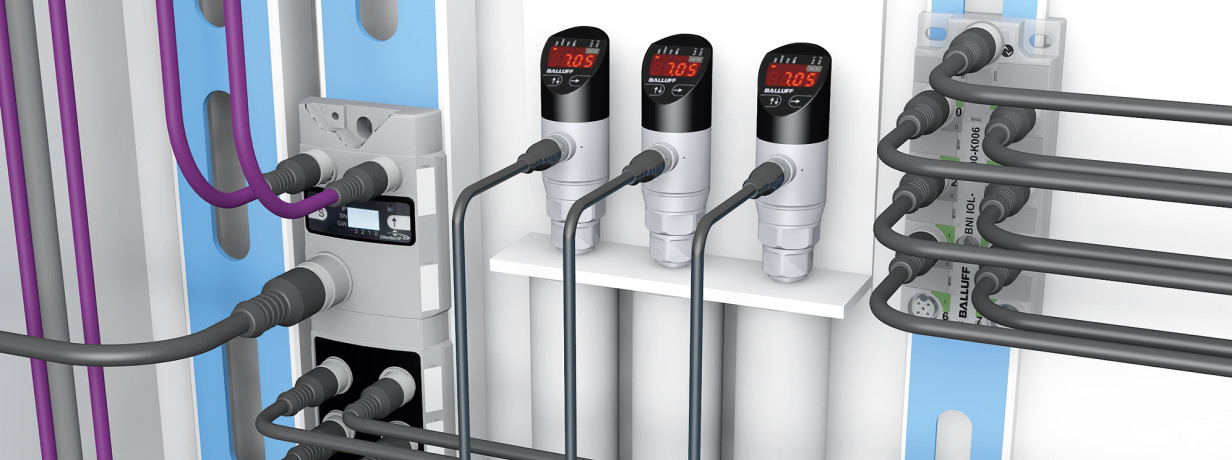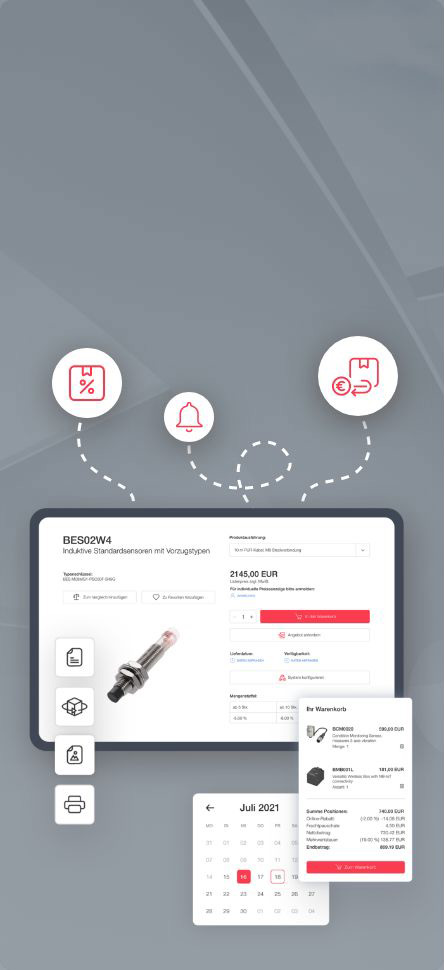IO-Link – Connecting and Networking
How IO-Link enables intelligent connection and networking in a machine

IO-Link enables bidirectional communication from the control level down to the field device (sensor, actuator). With an IO-Link master you can connect a variety of different IO-Link devices. Multiple IO-Link masters can be networked together over all commonly used fieldbuses.
Why the fieldbus?
These signals are transported within a machine (between sensors/actuators/ and the PLC) or across the plant (between different PLCs) via fieldbuses. These enable, among other things, communication over large distances.
A large number of different fieldbuses have become established over time. Since IO-Link is fieldbus-neutral, the device level with IO-Link remains unchanged regardless of which fieldbus you are using.
Components for automated identification with IO-Link
The IO-Link master is available for all common fieldbuses. It includes a power output as well as fieldbus input and output. Depending on the application, different numbers of ports are also available.
Fieldbus cable, for all common fieldbuses, enables networking of the IO-Link masters with the PLC and with other fieldbus slaves. The intelligent color sensor lets you teach, configure and diagnose over IO-Link. With the three-conductor sensor cable, it's simple to connect or replace devices.

 Products
Products

